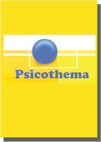Abstract
Background: Problematic use of Internet is a growing concern that interferes in the family and academic life of adolescents. This study had three related objectives: 1) to analyze the psychometric properties of the Revised Generalized and Problematic Internet Use Scale (GPIUS2) among Spanish adolescents; 2) to examine the theoretical cognitive-behavioral model of generalized and problematic Internet use; and 3) to study the relationship between the type of Internet use and generalized and problematic Internet use. Method: Participants were 1,021 adolescents in Bizkaia (55.7% girls, mean age = 14.95 years, SD = 1.71). Results: Factor analyses confirmed the internal structure of four factors originally proposed for GPIUS2, called Preference for online social interaction, Mood regulation, Deficient self-regulation, and Negative consequences. Consistent with the theoretical model, preference for online social interaction and mood regulation increased the likelihood of reporting deficient self-regulation, which, in turn, was associated with negative consequences for the adolescents. Conclusions: The GPIUS2 is a reliable and valid instrument that can be used in adolescent samples. Furthermore, the results support the cognitive behavioral model of problematic Internet use in adolescents.Downloads
Download data is not yet available.
